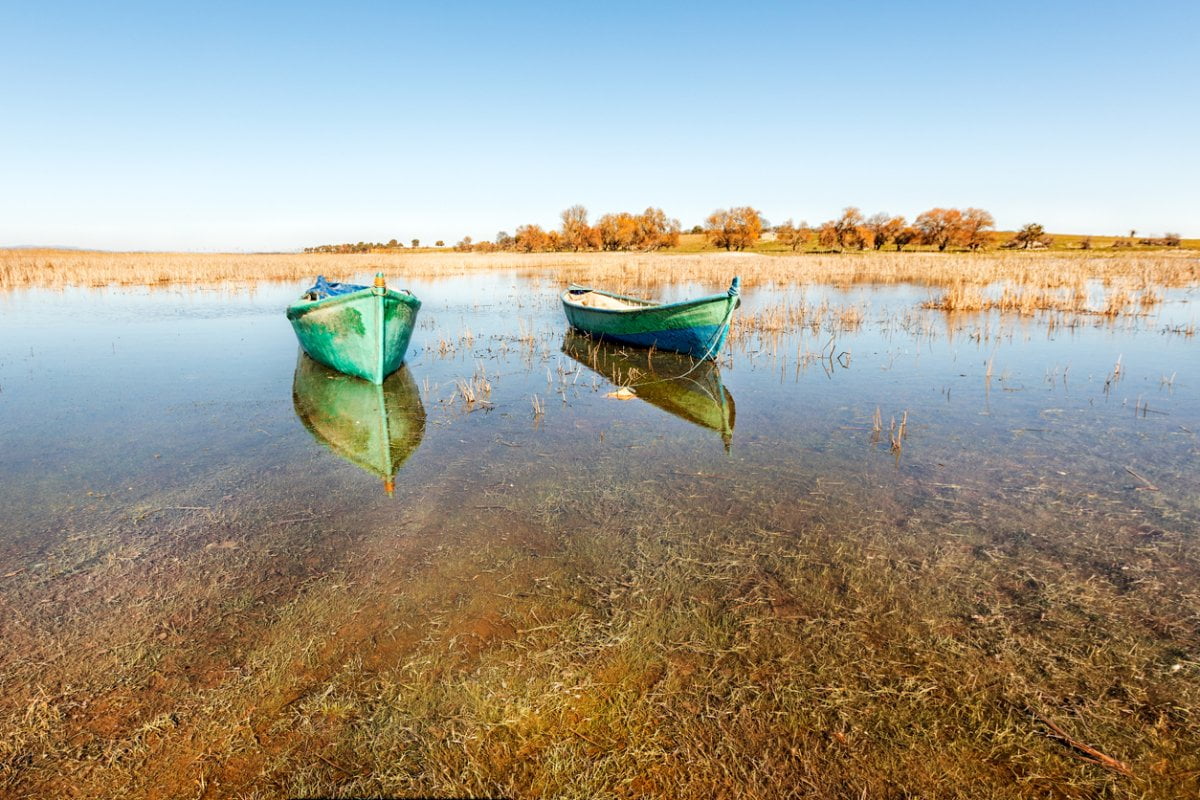Aware of the country’s incredible natural wealth, the Turkish authorities have resolutely promoted eco-tourism. ecological tourism.
Pero incluso si el motor de tu viaje es otro distinto a la naturaleza, te vendrá bien conocer cómo es el medio ambiente y el clima de Turquía, para entender cómo afectan ambos factores sobre los paisajes del país y también para saber qué echar a tu maleta de cara a tu estancia aquí.
Turkey’s climate is, in its main tourist destinations, temperate in character. for most of the year, with warm and pleasant summers.
However, this is only a very generic note, since there are actually wide regional variations and seasonal.
Therefore, before starting your trip you should be well informed and consult the forecasts, since each region has its own climatic characteristics, in some cases extreme.
We can speak of a Turkey with a temperate Mediterranean climate, mainly on the Aegean and Mediterranean coasts, as well as in Istanbul and eastern Thrace. Aegean and Mediterranean coasts, as well as in Istanbul and eastern Thrace..
Es decir, veranos calurosos y secos, con el mar aportando ese toque de humedad que potencia la sensación de calor, pero que a cambio templa y estabiliza las temperaturas durante el invierno, que suele ser frío pero no en exceso.
Las temperaturas máximas veraniegas suelen rondar y superar los 30º, mientras que las mínimas invernales rara vez alcanzan grados negativos.
Su precipitación anual se concentra en invierno y primavera, y en muchas ocasiones no llega a los 1300 mm de volumen total.
The northern Anatolian coast falls into this climatic classification. northern coast of Anatoliathat is to say, the Black Sea coast.
Although its winters are not harsh, with temperatures that do not usually fall below 0ºC, the most outstanding feature of this region is its cooler summers, with temperatures that do not usually exceed 30ºC on average.
It is also a wetter region at all times of the year and, precisely for this reason, annual rainfall can reach or exceed 2500 mm.

Inland, after leaving the coastline and ascending to the plateau that makes up most of the Anatolian peninsula, the the greater part of the Anatolian peninsula, thethe climate becomes harsher.
On the one hand, as far as temperatures are concerned: the climate becomes more continental, with values that climb on the hottest days of the summer (above 30º) but fall sharply in winter (with minimum temperatures below zero, even during the day).
Another key factor is the scarcity of rainfall, which leads to a palpable aridity in the environment: the country’s capital, Ankara, barely reaches 400 mm per year, and the same is true of other cities in the region, such as Kayseri.
Moreover, such precipitation is often in the form of snow.
The climate becomes even harsher and more extreme in eastern Anatolia: the remoteness from the sea is combined with the elevation of the terrain and the presence of high mountains, resulting in really cold winters, with minimum temperatures below -10ºC on many occasions.
Its rainfall, although not copious or constant (about 90 days a year), is usually in the form of snow, remaining in the landscape permanently in the cold season.
On the other hand, summers are characterized by very hot days and strong sunshine, due to the altitude of its cities, as is the case, for example, with Van, at about 1,700 meters above sea level.
If your trip to Turkey is a circuit that takes you to visit different regions, you will discover that the variety of landscapes is spectacular.
A variety and richness that is not only perceptible to the naked eye, but that multiplies its surprises when you delve deeper into the subject.
In this sense, organizations such as WWF speak of more than a dozen ecoregions, determined by their climatedetermined by their climate, relief and other natural conditions.
Of these ecoregions, the following can be highlighted:
As we have anticipated in the previous section, Turkey is characterized by a great variety of ecoregions, with native flora and fauna associated with them.
A walk through protected natural areas serves to discover first-hand some of the country’s most significant plants and animals.
In terms of flora, it is estimated that there are around 9,000 species of species present here number around 9,000..
Estas son algunas de las que te gustará conocer durante tu viaje, si en tu lugar de origen no están representadas:
In Turkey’s environment, animals play a fundamental role, with an important wildlife that continues to balance (not always easily) with the country’s development.
From large mammals to small arachnids, numerous reptiles, insects and even mollusks and fish off its coasts.
Special mention should be made of birds, with between 400 and 500 species present in the country, 250 of which cross it on their migratory routes between Europe and Africa.
Among the families with the greatest variety of species are ducks and waterfowl, pheasants and grouse, pigeons and turtle doves, coots and coots, plovers and lapwings, shorebirds, gulls, birds of prey (eagles, hawks and kites) and owls… just to name a few.
Among the most characteristic species of the country are the Rüppell’s warblers (Sylvia ruppeli), nubian shrikes (Lanius nubicus) or the treecreepers (Certhia brachydactyla).
Y muy especialmente, los ibis eremitas ( Geronticus eremita), which were in serious danger of extinction, have ‘taken flight’ and several hundred specimens have been released into the wild.
Other animals closely related to the country and that unfortunately are still in danger of extinction. in danger of extinction are the leopards.
En el pasado, estos grandes felinos estaban presentes en Asia Menor pero en la actualidad se desconoce si lo siguen estando.
En particular, los leopardos de Anatolia ( Panthera pardus tulliana) and the Caucasian leopard (Panthera pardus ciscaucasica).
According to some sources, the Anatolian ram is another of the animals in danger of extinction, although hunts continue to be organized for its capture, as is the case with gazelles, chamois, roe deer and wild boar, among other species.
In southeastern Anatolia, the striped hyena is very characteristic of the striped hyena (Hyaena hyaena), which is not considered threatened in this territory.
On the other hand, there is greater concern for the loggerhead turtles (Caretta caretta), which usually lay their eggs on some Mediterranean beaches (Anamur).

Turkey has not traditionally been a leader in environmental conservation.
However, in recent years it has experienced a major boost in this area, largely as a result of its aspirations to join the European Union, where this commitment is a fundamental condition for membership.
At present, there are nearly 300 protected nearly 300 protected areasThe following are the largest ones: national parks, natural parks and other areas.
These are the largest:
Special mention should be made of two national parks that, in addition to being protected by this state status, are also recognized as World Heritage Sites by Unesco. World Heritage by Unesco, which reflects not only their natural but also their cultural value: Mount Nemrut National Park and Ancient Troy National Park.
Another area in which the country has made great strides is in the protection of avifauna. protection of avifauna.
El clima de Turquía, templado en muchas áreas, y la presencia de grandes humedales, ayudan a que muchas especies pasen aquí parte del año.
De hecho, cuenta con more than a dozen Ramsar Siteswhich are wetlands of special importance for nesting, breeding or migratory birds.
And even smaller but no less interesting are the natural monuments of the natural monuments which, in many cases, are protected trees for their longevity, beauty or uniqueness.
One can cite cedar trees about 2,000 years old in Finike (about 100 km from Antalya), a plane tree also a thousand years old in Istanbul or junipers and yews with hundreds of years of life.